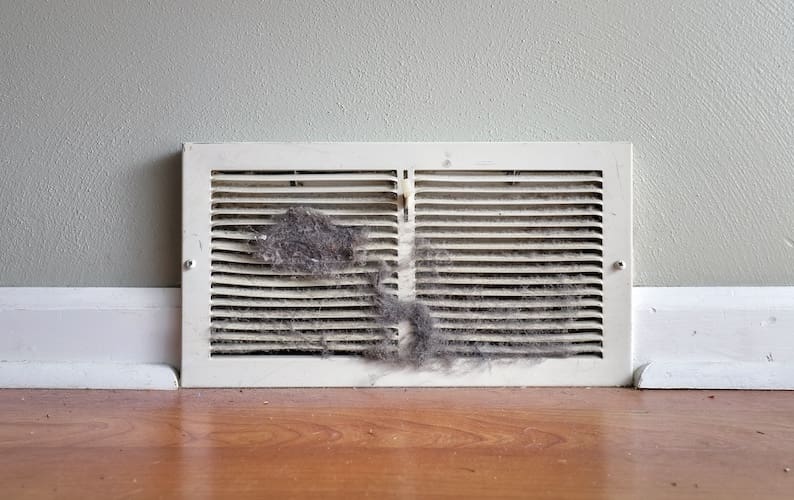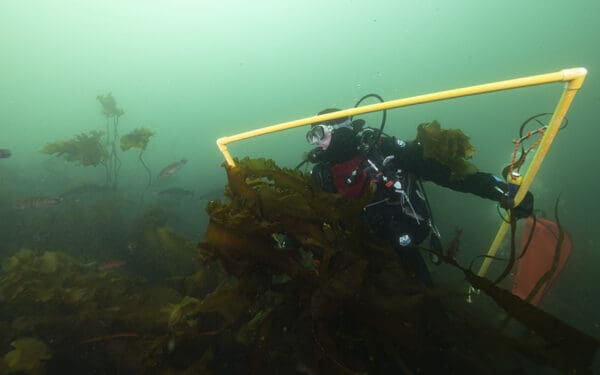
The air quality indoors, where most of us spend the majority of our time, is influenced by mold, detergents, PFAS chemicals, gas stoves and more. Photo: Shutterstock
When we think about air pollution, few of us think about the air circulating in our buildings. But the fact is, that’s where we spend 90% of our time.
Landfills, exhaust pipes, and fumes emanating from tree-killing gas lines all pollute our air and heat up the climate. Still, there’s another insidious pollution that many of us ignore: indoor air pollution. At home, in our workspaces, schools, and public buildings, we are exposed daily to mold; off-gases from paint, furnishings, and cleaners; and fumes from gas stoves and furnaces. Some of the toxic air we breathe indoors results from the seepage of polluted air outdoors.
That’s a lot of pollution to breathe in, not just for a moment while crossing a busy street but continuously, 365 days a year. We spend so much time indoors, working, studying, exercising, or just lounging around on the couch that indoor air quality – or the lack of it – can profoundly affect our health.
Unfortunately, studies show that indoor air quality is worsening, even though outdoor air quality has generally improved since the 1990s. Thanks to the vast number of chemicals used in building materials, furnishings, home products, and cleaners, the average person is exposed to thousands more chemicals and noxious gases than they were decades ago.
When vapors or particles permeate a poorly ventilated building, these pollutants concentrate, particularly with the hotter, more humid weather that climate change is causing.
Where Does Indoor Air Pollution Come From?
While the EPA says tobacco smoke, combustion byproducts from gas stoves and heaters, chimneys or furnaces, and off-gasses from paints and building materials are the biggest sources of indoor air pollution, not all pollutants are chemical. Many sources are biological and include molds, mildew, pet dander, dust mites, cockroaches, pollen, and proteins from dried rat and mouse urine.
Mold is an especially pervasive and dangerous irritant. As the climate heats up and storms intensify, the incidence of mold in buildings seems to be spreading. Leaky roofs, leaky pipes, damp basements, drainage problems, and high humidity, coupled with poor ventilation, allow the fungus to proliferate.
If we encounter such pollutants at home, we try to do something about them if we can afford to or are lucky enough to have a landlord who takes the problem seriously. But most of us have little to no control over the air quality we encounter daily at work, school, long-term care facilities, or daycare centers. We move about these spaces unaware of the risks that may lurk behind the walls. It makes you want to hold your breath.
The Health Dangers of Indoor Air Pollution
But you can only hold your breath for so long.
The COVID-19 pandemic was a very tangible lesson in the importance of indoor air quality. In a matter of weeks, we all grasped the importance of good ventilation in tamping down the spread of the virus. However, when it comes to the consequences of breathing toxic chemicals and biological substances like molds, mildew, and dust mites, many of us struggle to draw clear lines to our health woes.
But science has drawn lines. Indoor pollutants can cause a range of respiratory illnesses, including asthma, allergic rhinitis, and lung inflammation. Studies show that household air pollution may even compromise lung development in fetuses. And in children and adults, indoor air pollution can cause heart disease, cognitive deficits, and cancer.
As with many environmental issues, studies have shown that people in less affluent households are often exposed to higher levels of indoor pollutants. So are people of color who are more likely to live next to highways and polluting factories because of the likelihood of seepage. Outdoor air finds its way in. Those most at risk for developing long-term health problems include children, older adults, and people with preexisting health conditions.
Clearing the Air in Public Places
By now, health officials and scientists know these dangers so well that many are trying to address it through laws that would better identify, monitor, and improve indoor air pollution. In Massachusetts, for instance, the state’s sanitary code was recently updated to hold landlords responsible for preventing mold and moisture infiltration. A bill to address mold contamination in schools, long-term care facilities, correctional facilities, early childhood education facilities, and public housing has also been introduced.
How to Improve Indoor Air Quality at Home
In the meantime, as more of us wise up to the quality of our air indoors, we need to confront bigger systemic issues that determine its quality. Let’s get toxic chemicals out of our products and break the stranglehold gas has on our health and climate.
And here are a few steps you can take for yourself as we work collectively for cleaner air indoors:
- Open the windows for 10 minutes each day to let in fresh air. This should help dilute pollutants from cooking, heating, etc.
- Don’t open the windows if you live near a busy freeway, factory, coal-burning plant, or other source of outdoor air pollution.
- If you can afford it, consider investing in a portable HEPA air cleaner to help purify the air in your home.
- Avoid burning in your home. This includes using fireplaces, wood stoves, gas appliances, and candles.
- Avoid air fresheners, sprays, and cleaning products. When using them, opt for nontoxic options.
- Vacuum and dust regularly to reduce dust mites.
- Eliminate off-gassing by opting for used furniture over new. Choose solid wood over composite wood.
- Maintain relative humidity levels between 30% and 50%. Wet surfaces, water-damaged materials, and standing water can breed mold and mildew. House dust mites also grow in damp, warm environments.
- For those who can choose appliances, opt for an electric stove over a gas stove.
- Check common hideouts for mold. These include window moldings, shower stalls, and surfaces surrounding air conditioners.
We need to take action in both small and large ways to enhance the spaces where we spend most of our time. It’s time to clear the air in our buildings, once and for all.
This is one of an occasional series revealing the truth of environmental issues.



